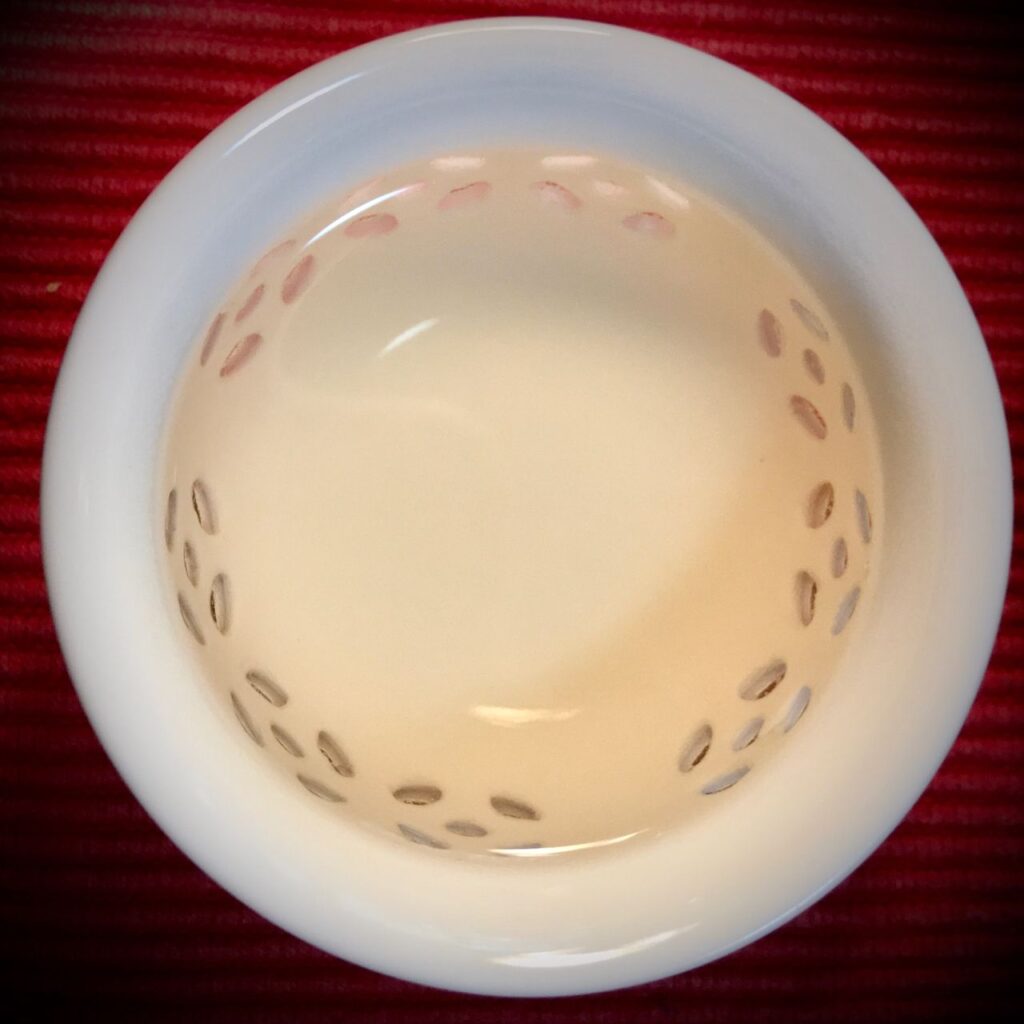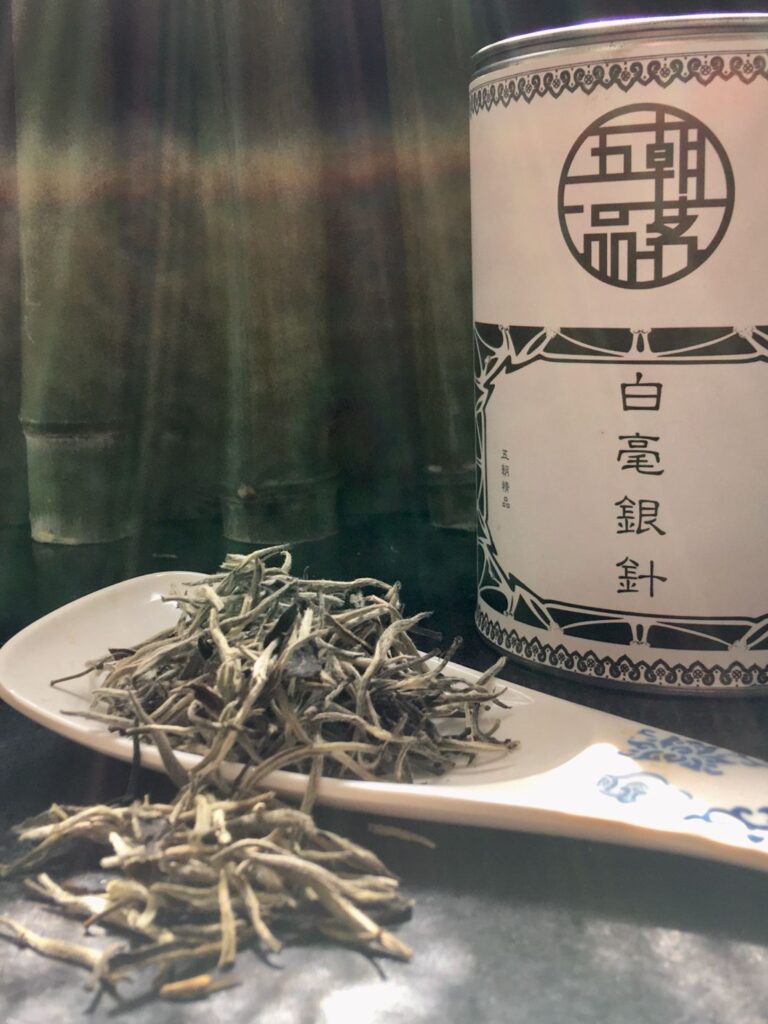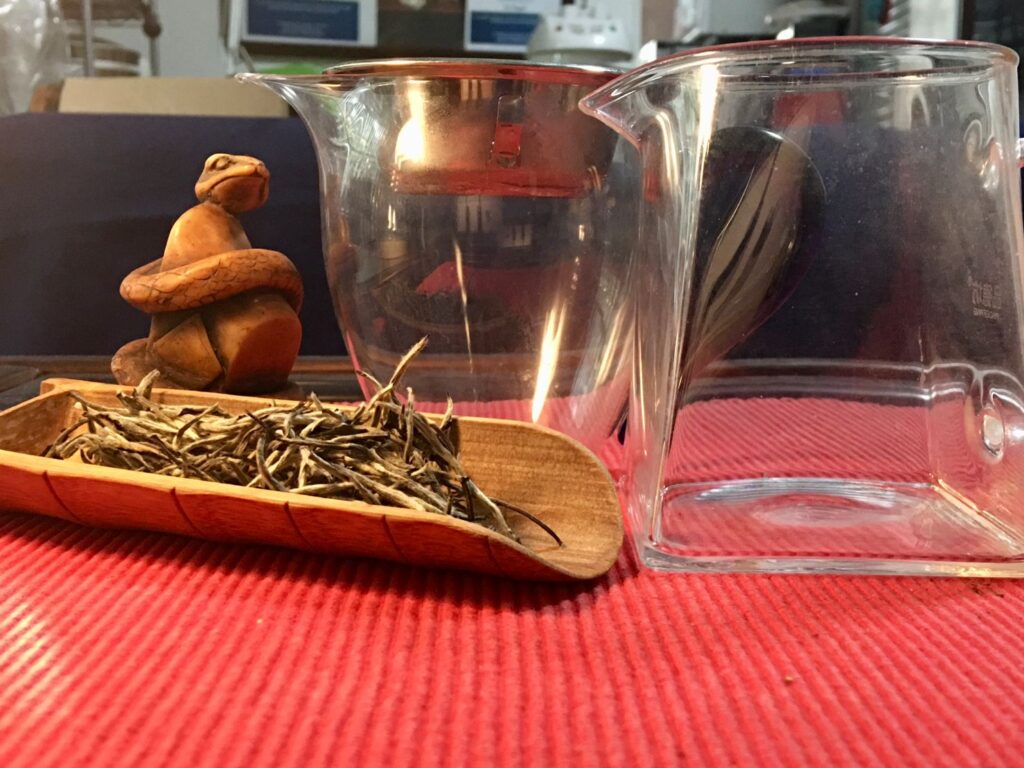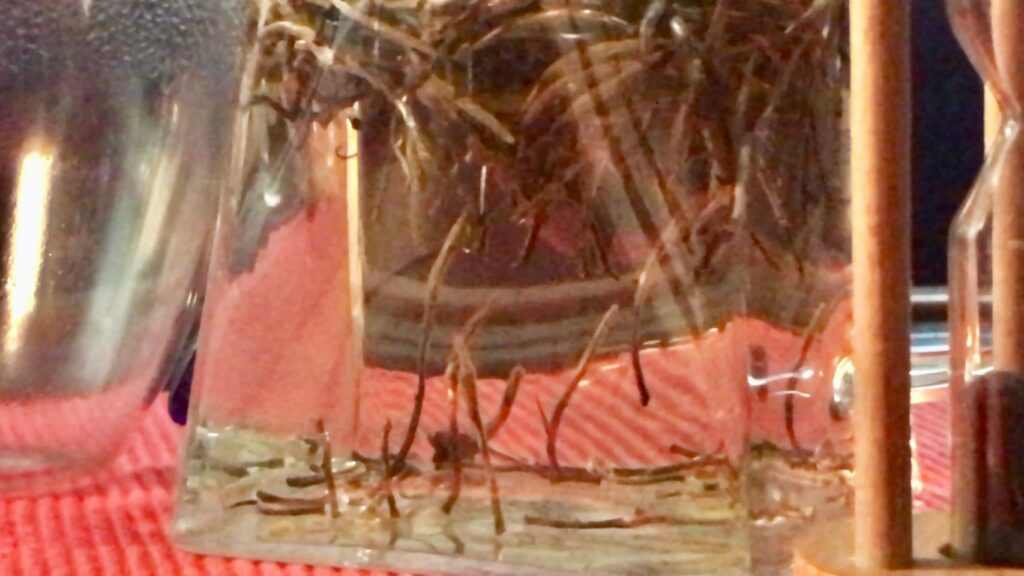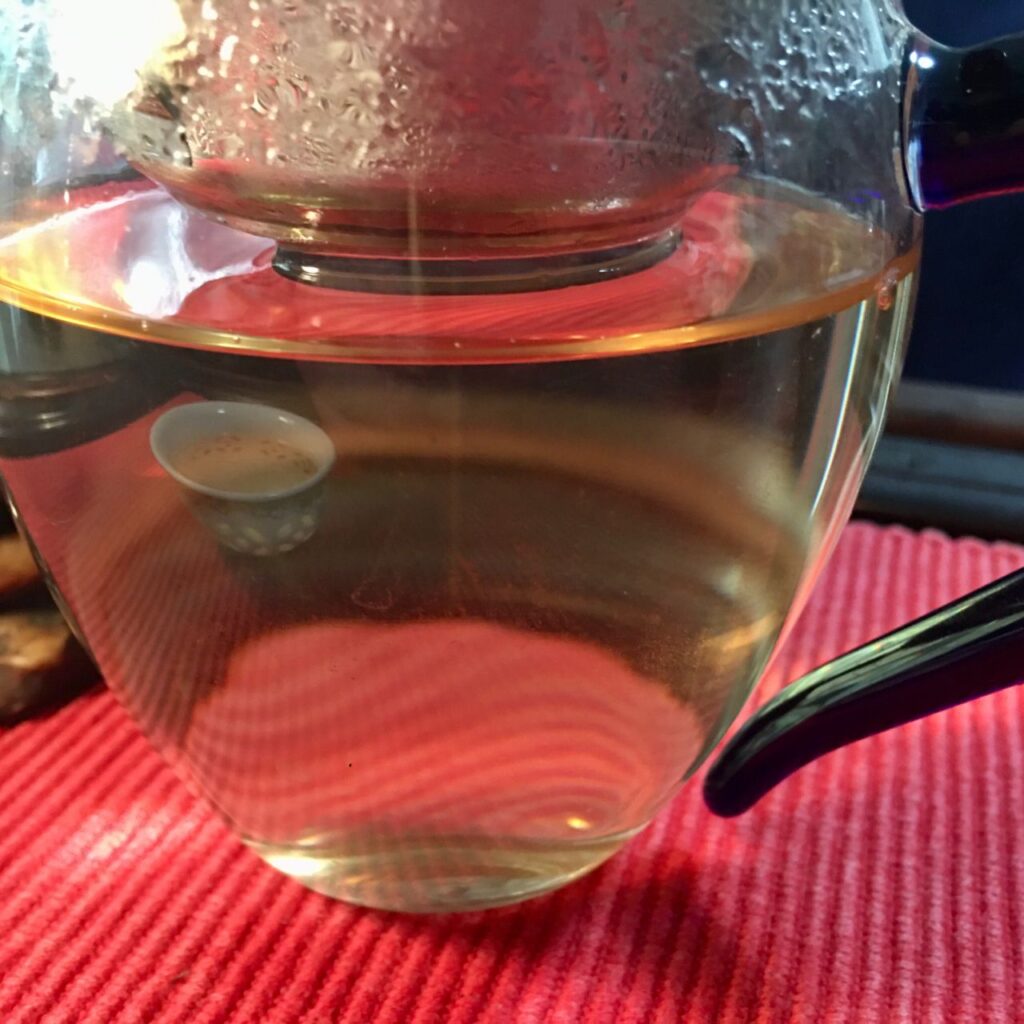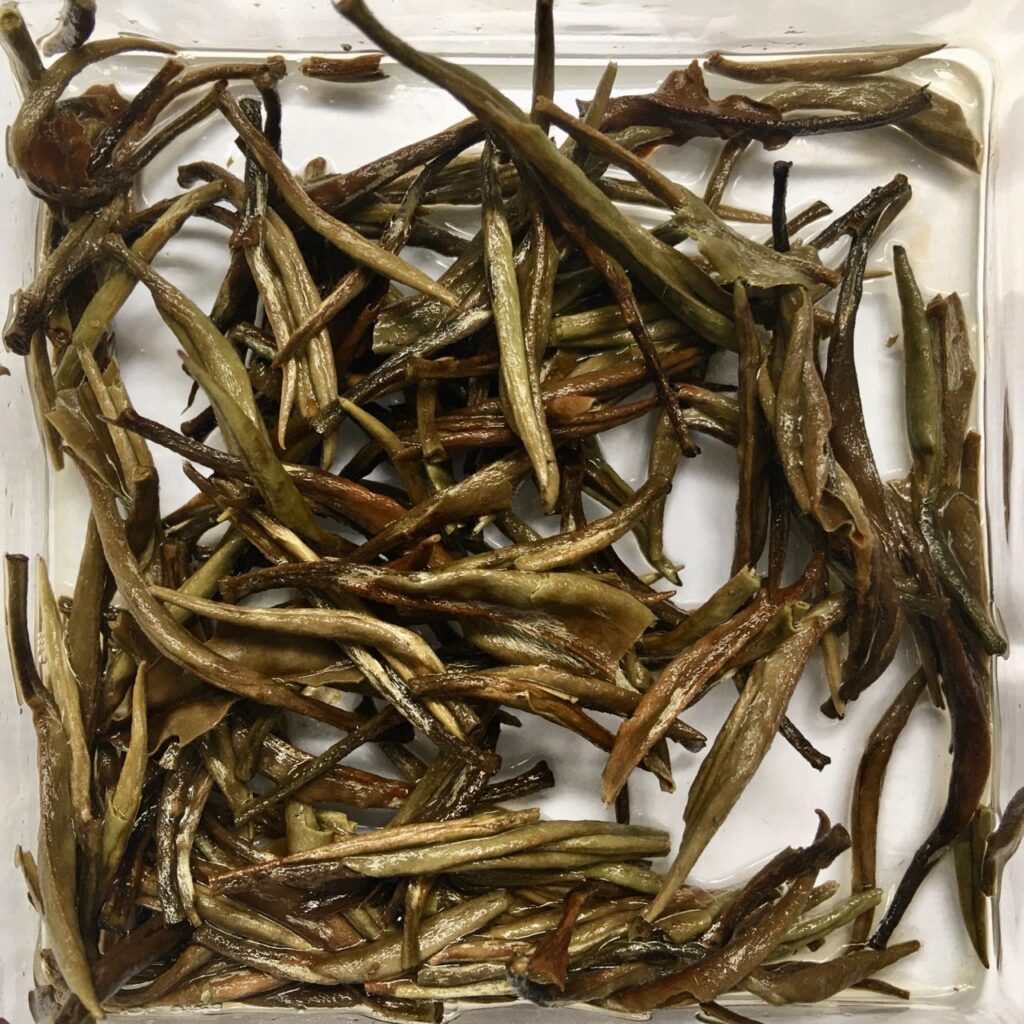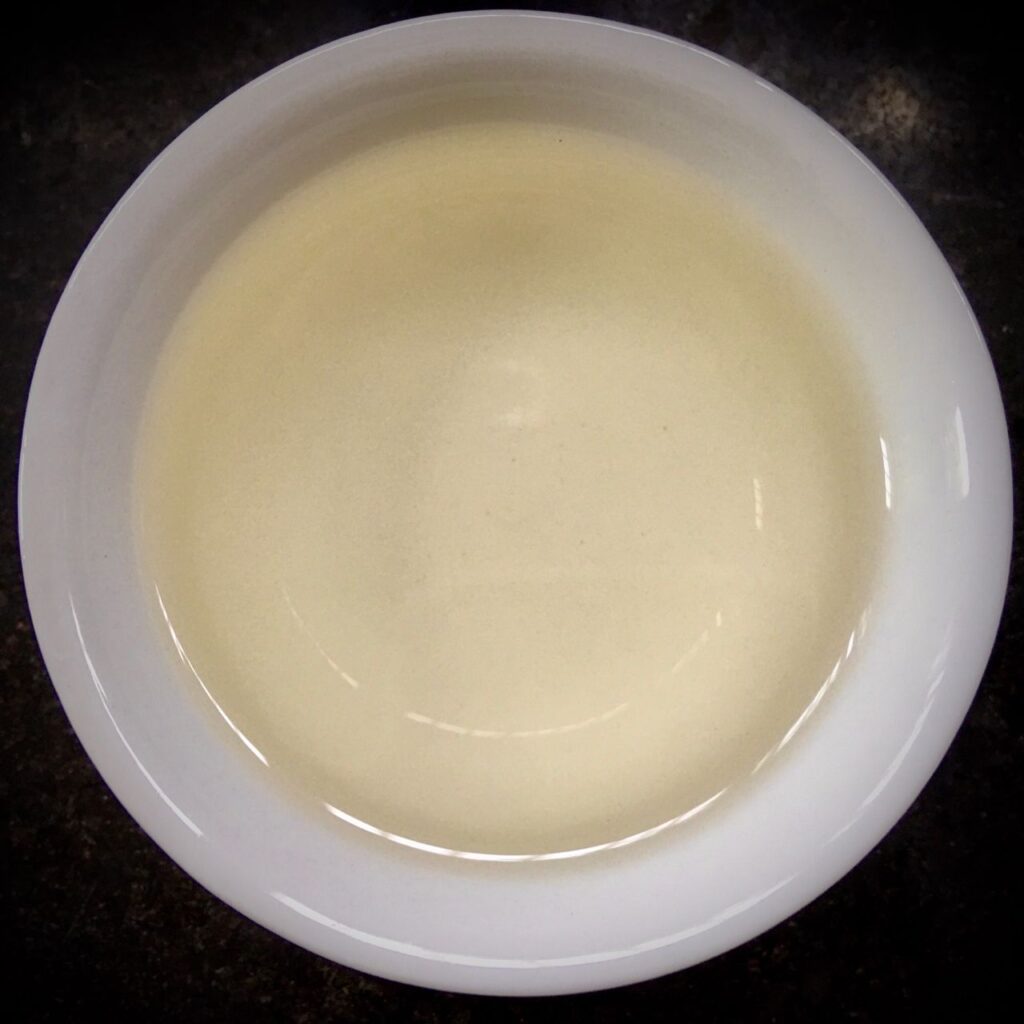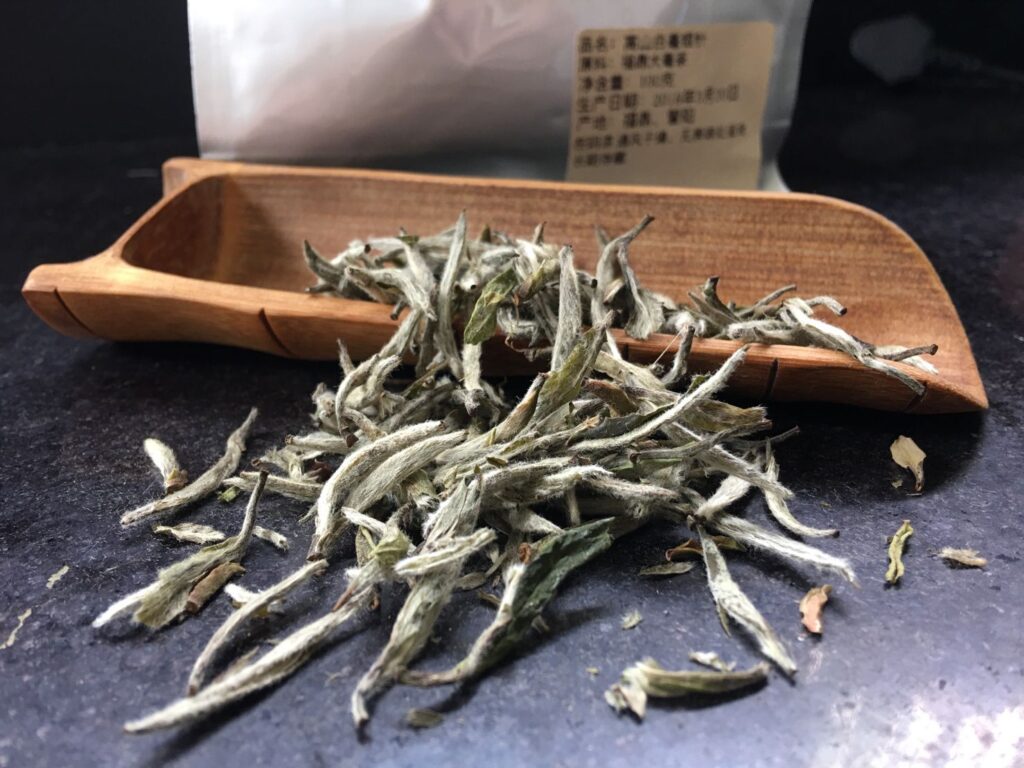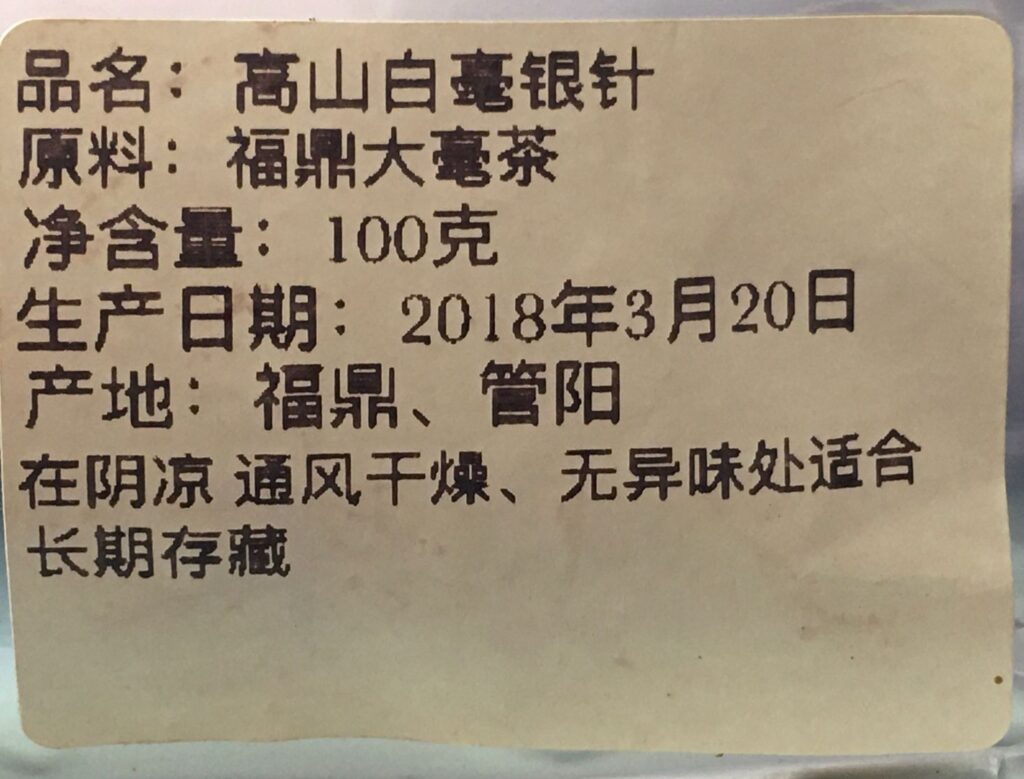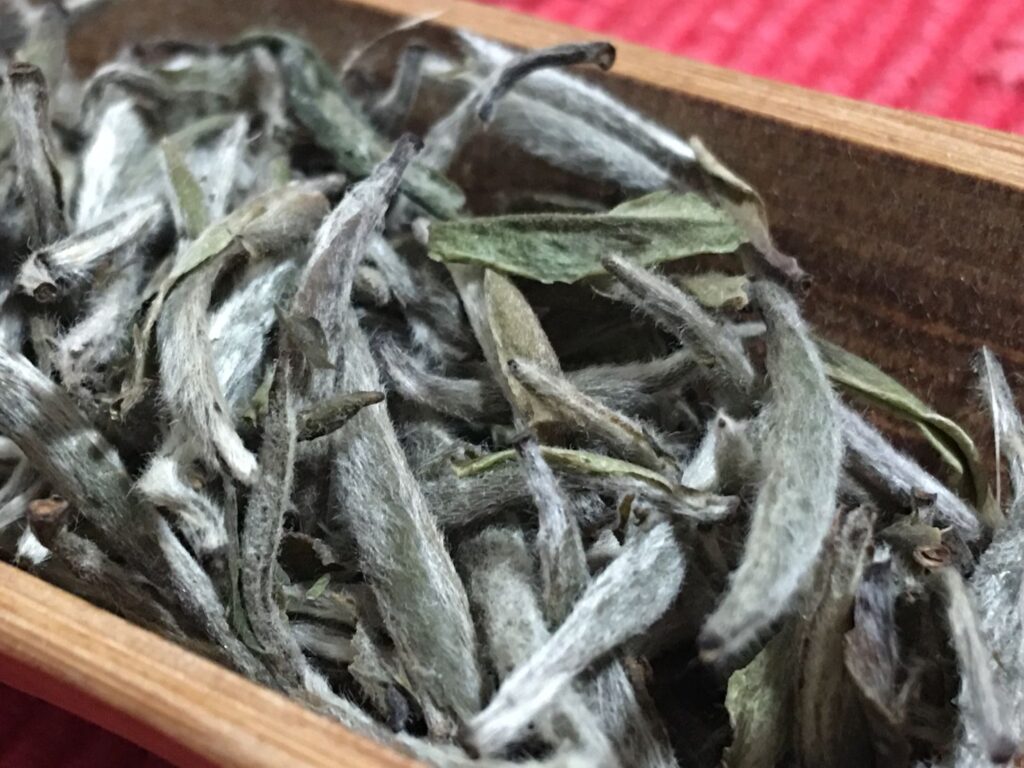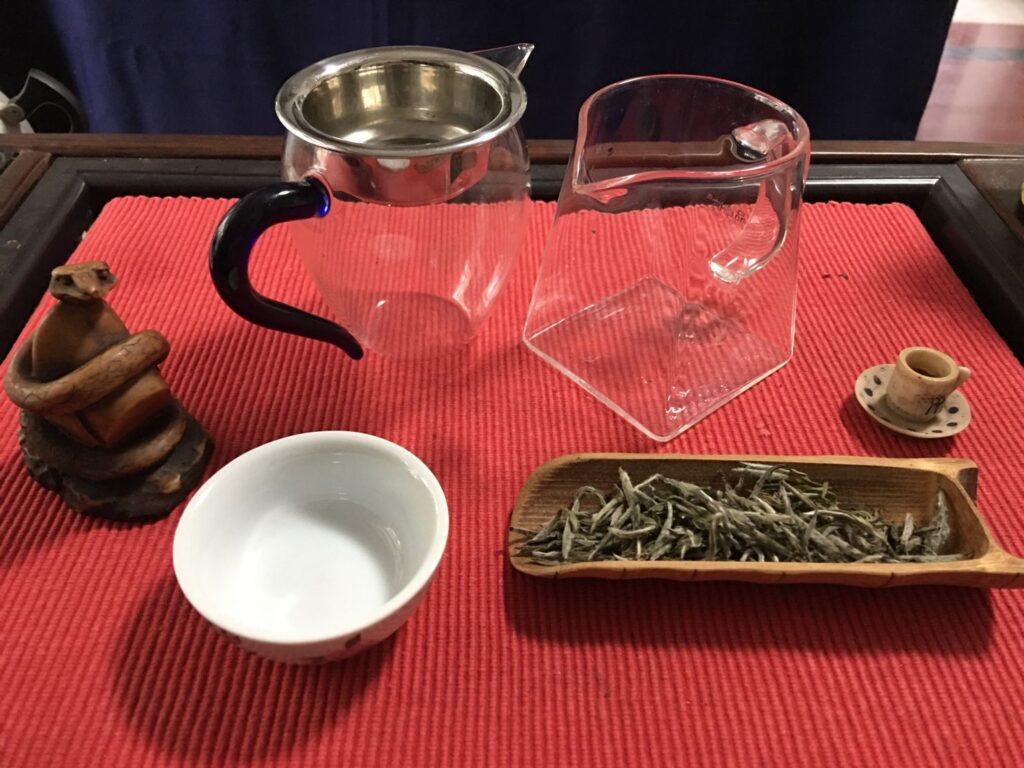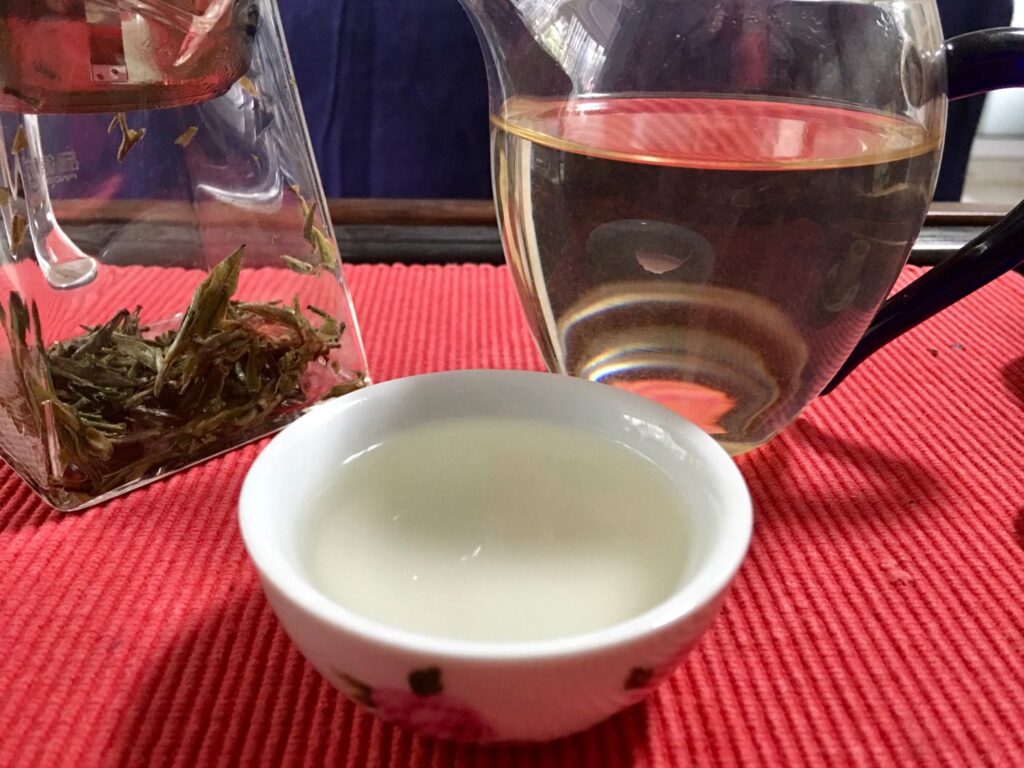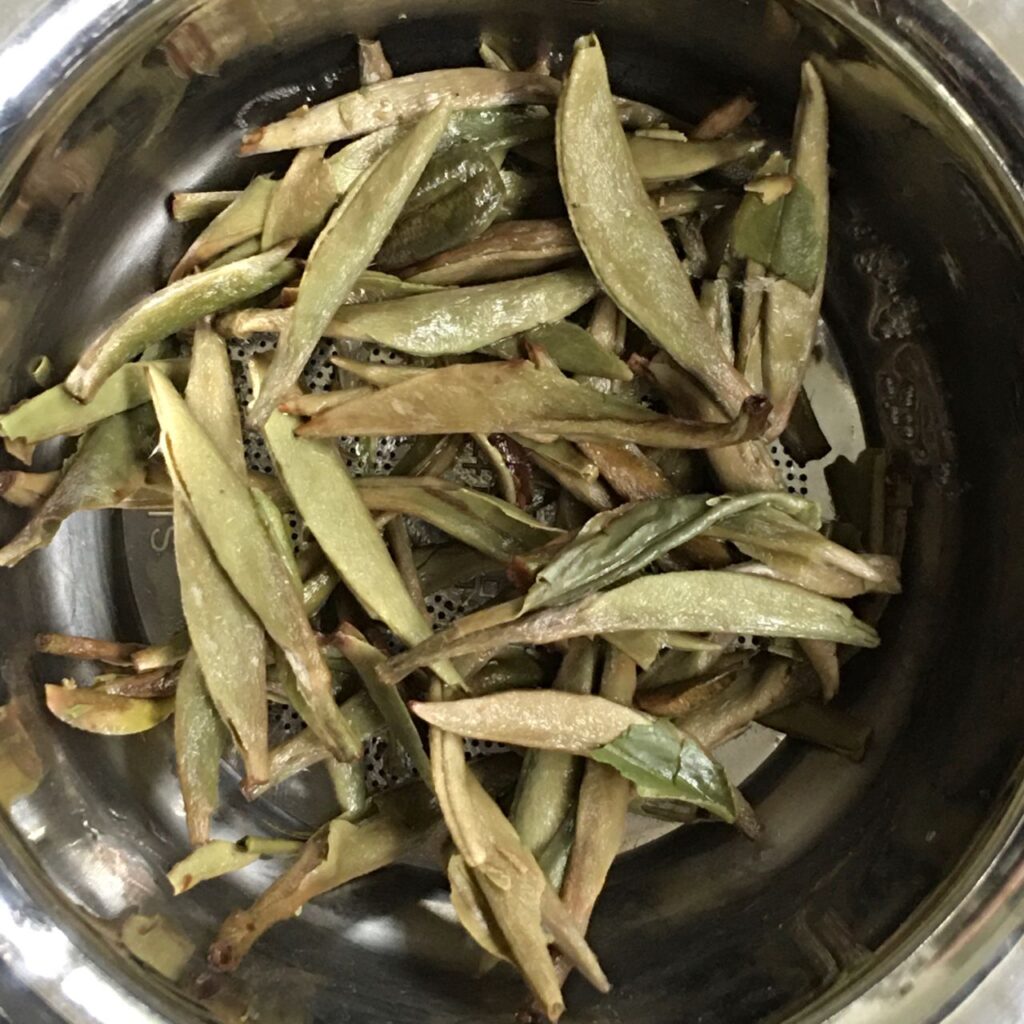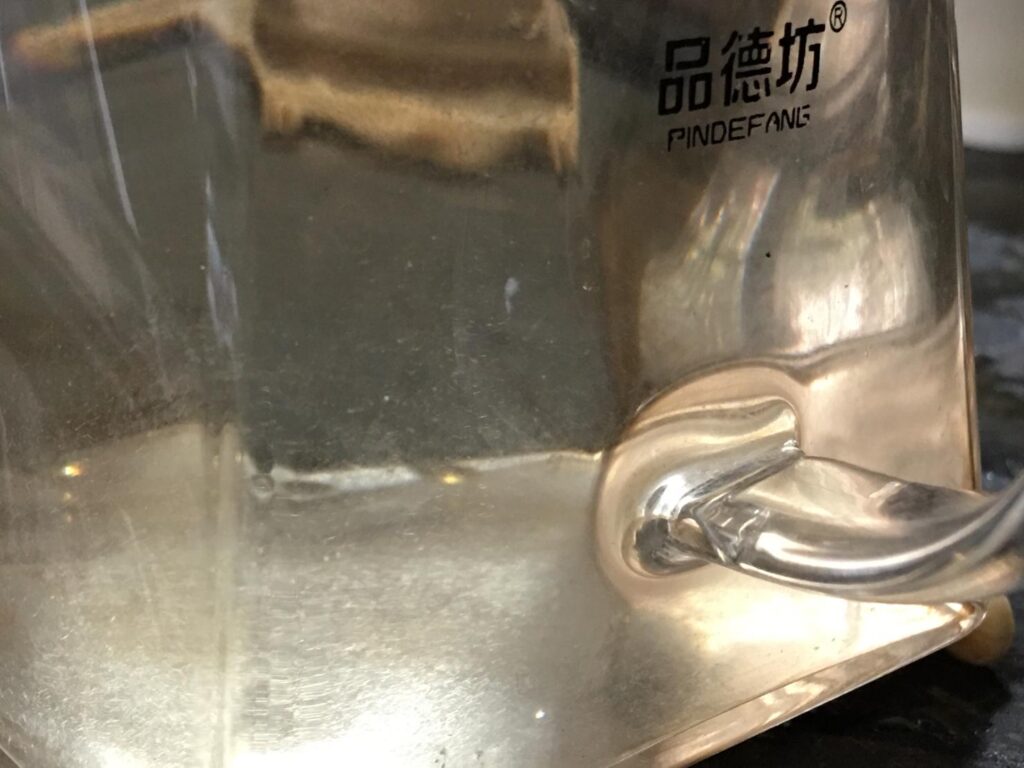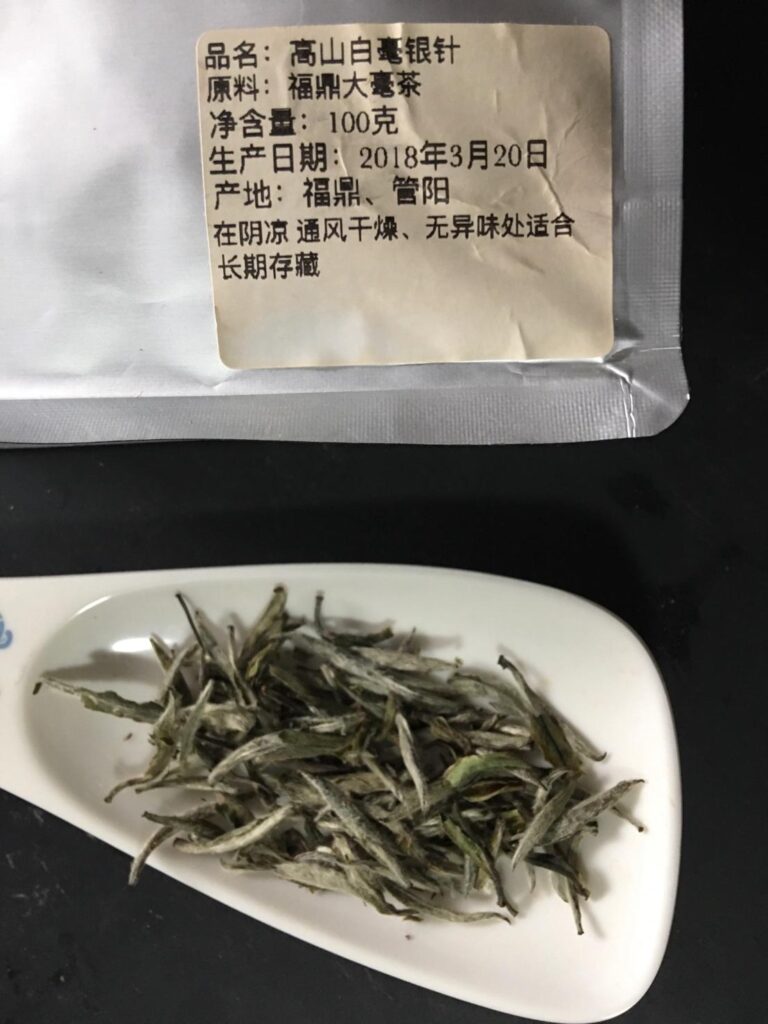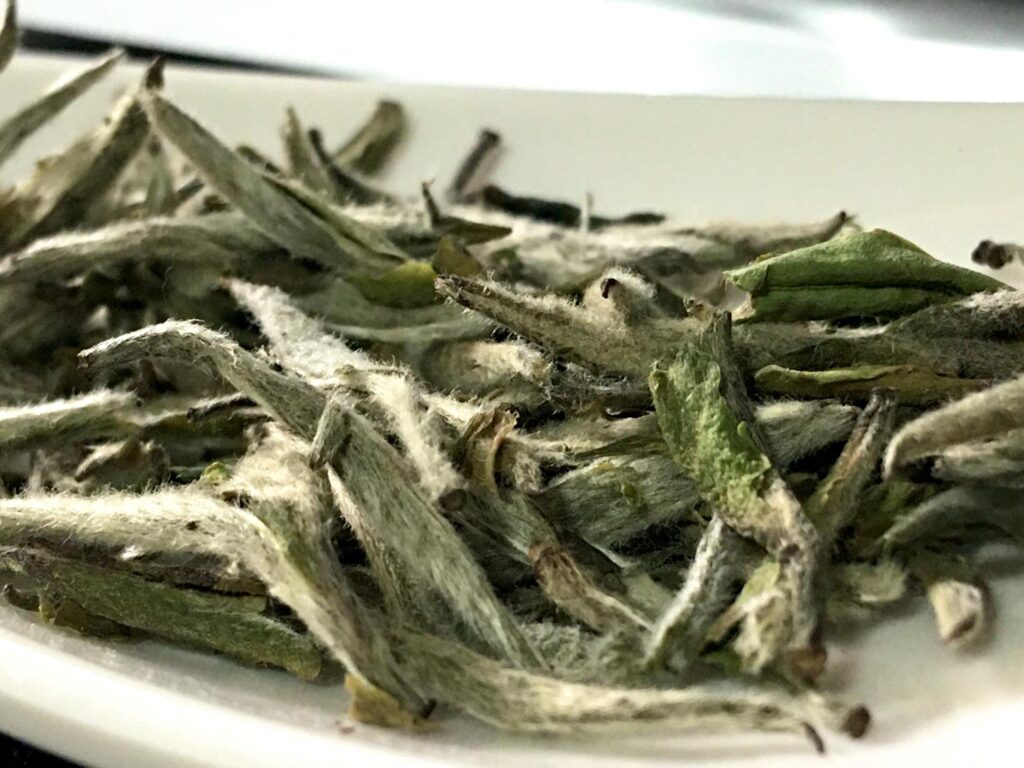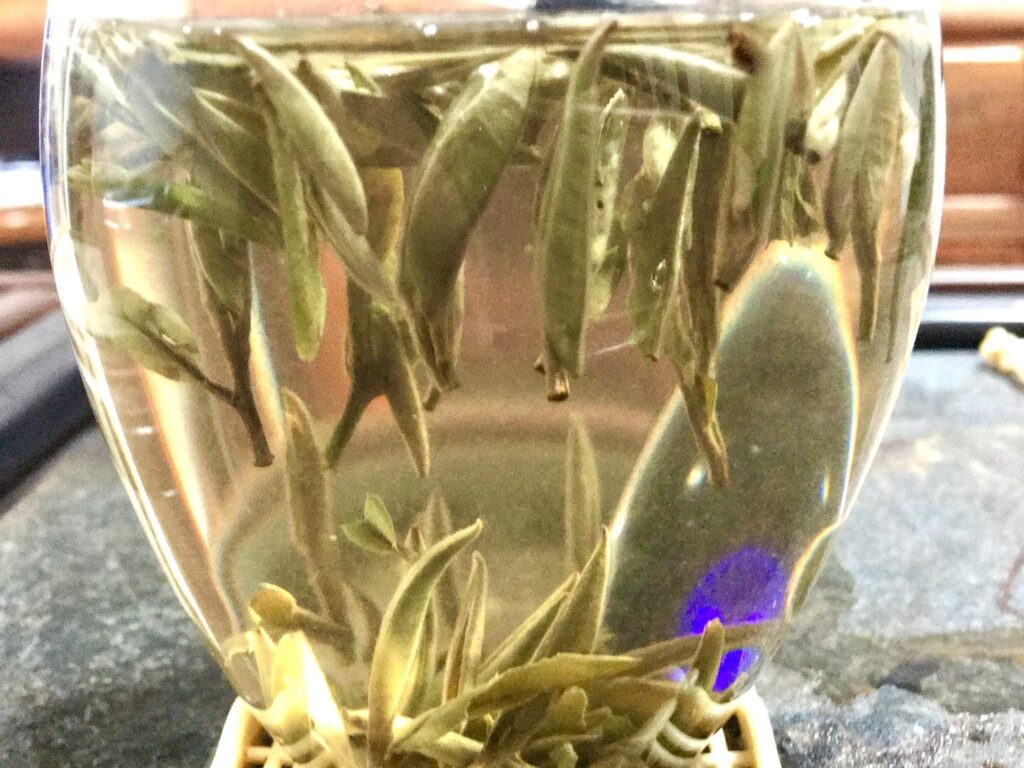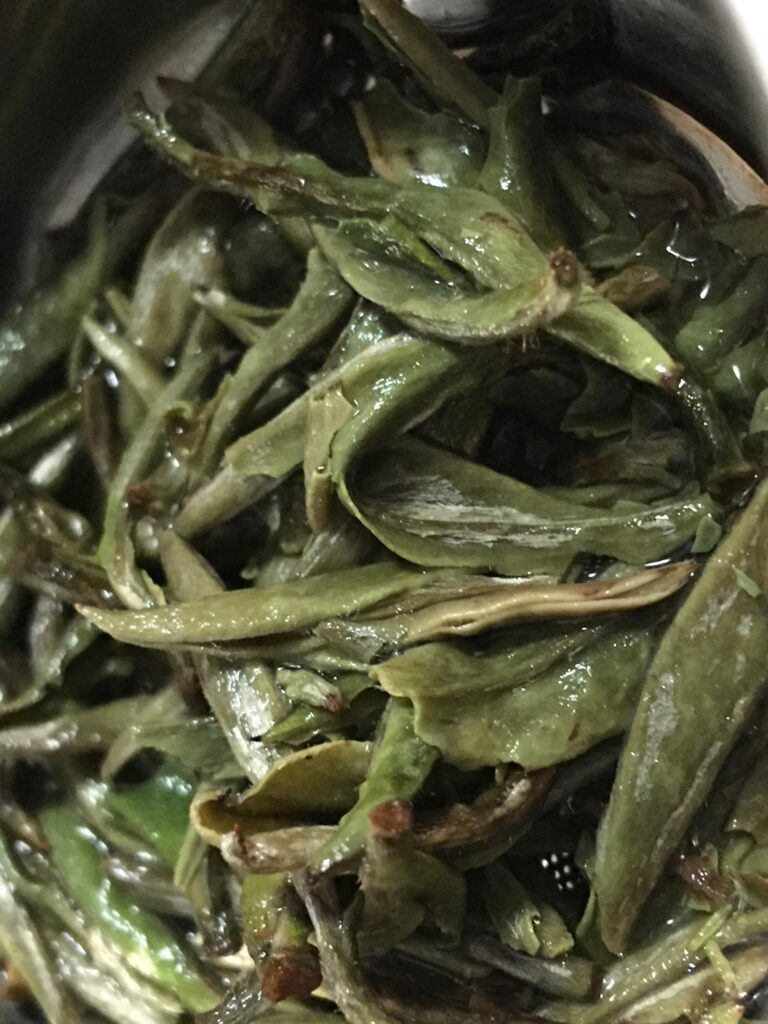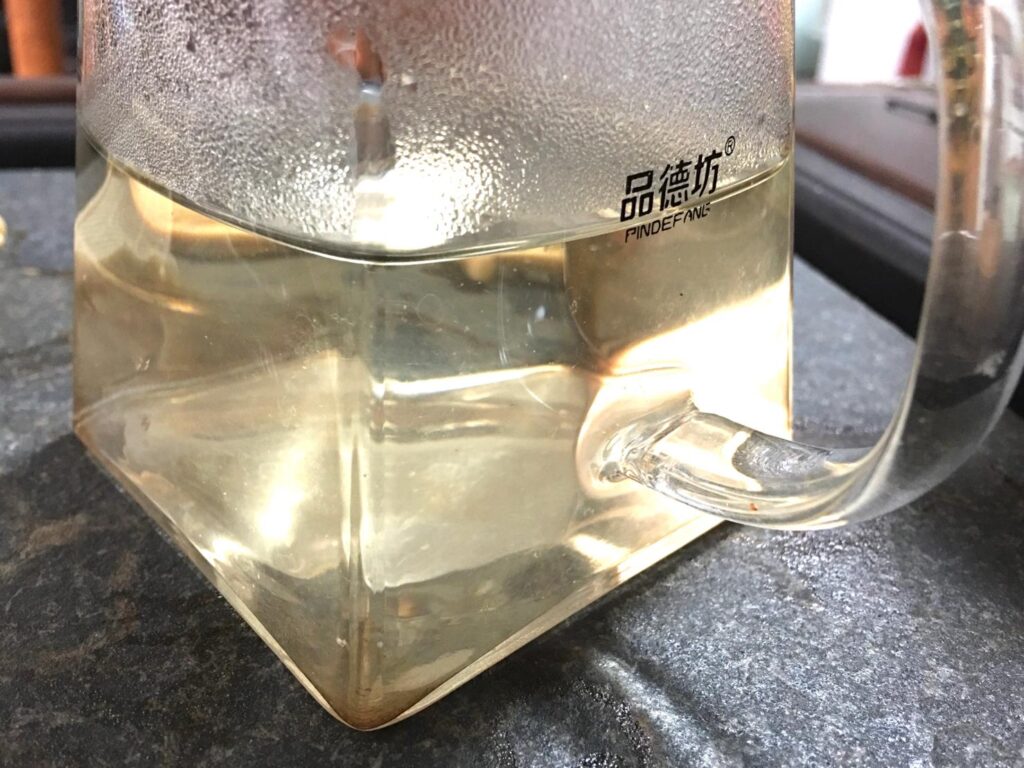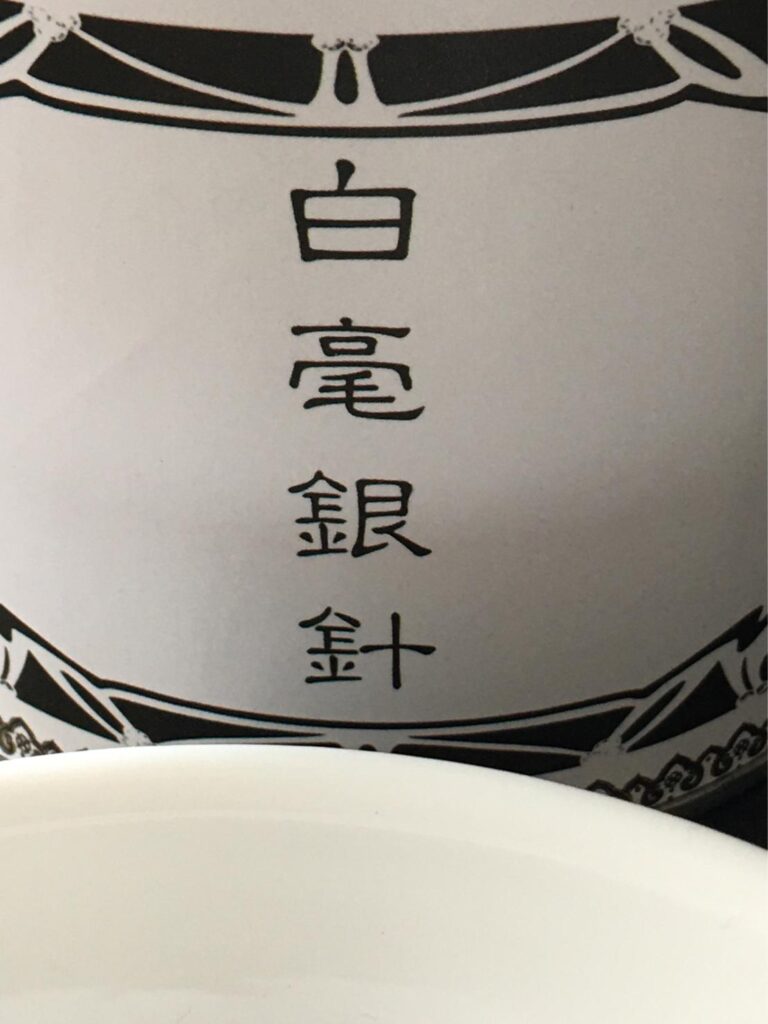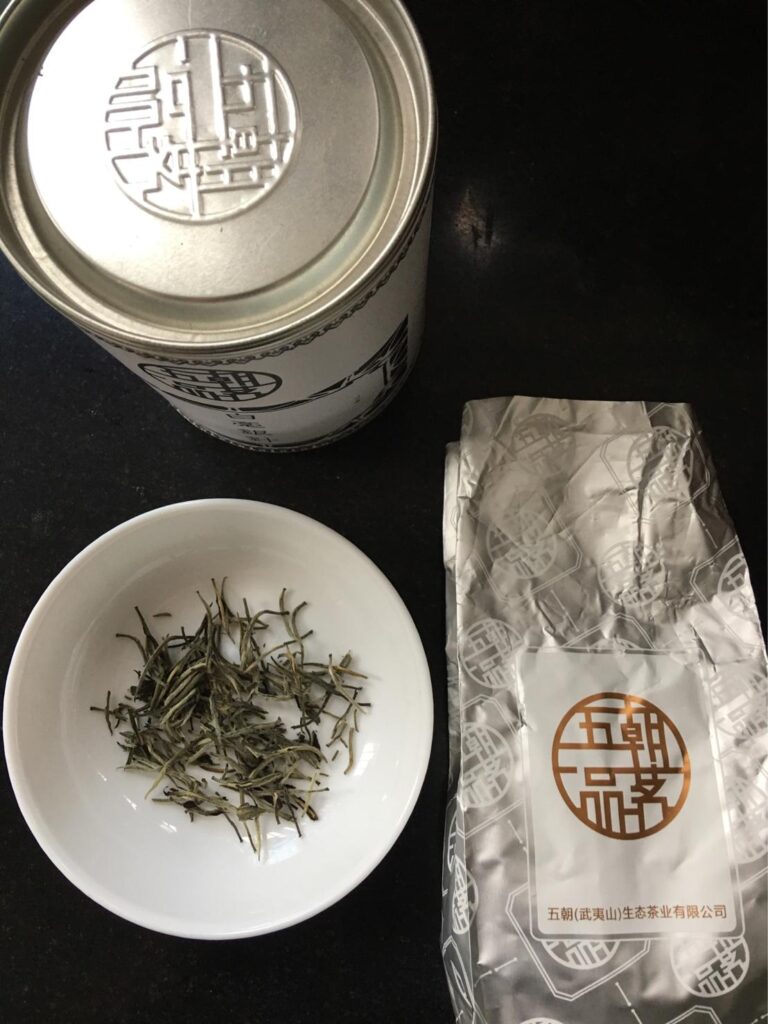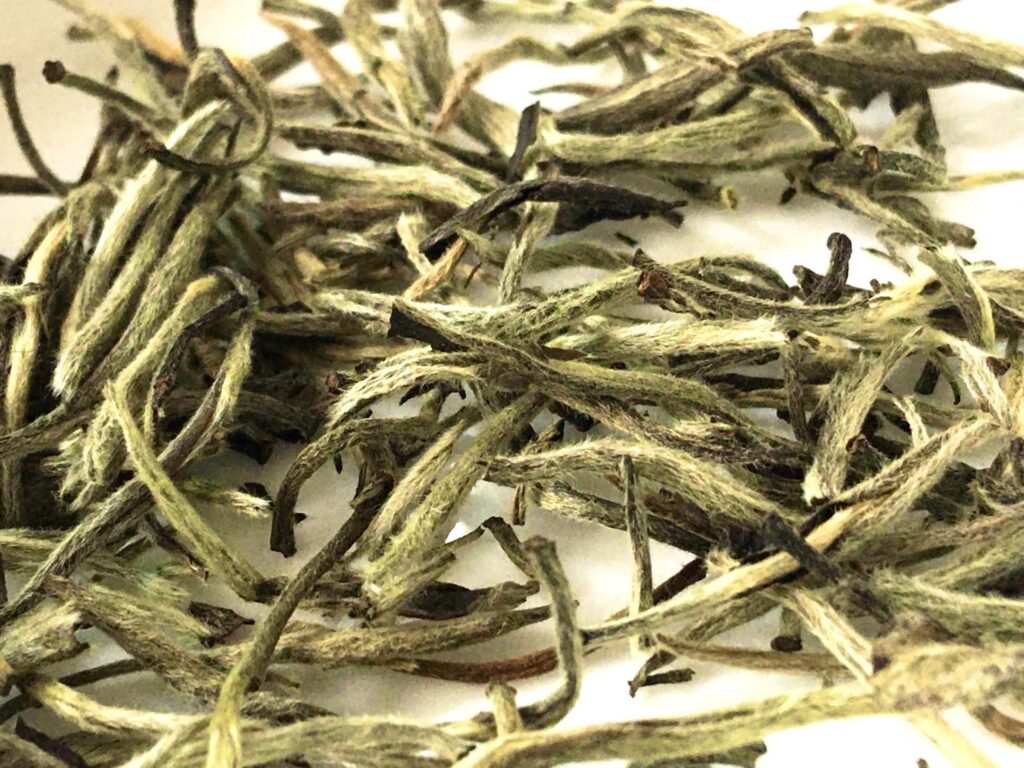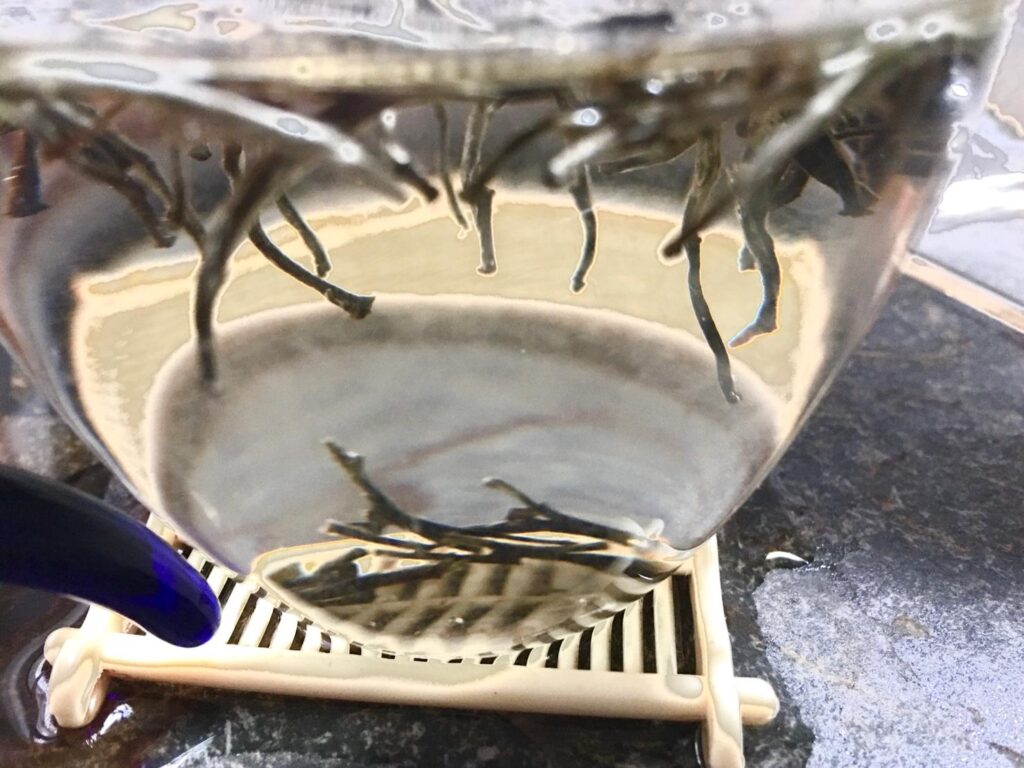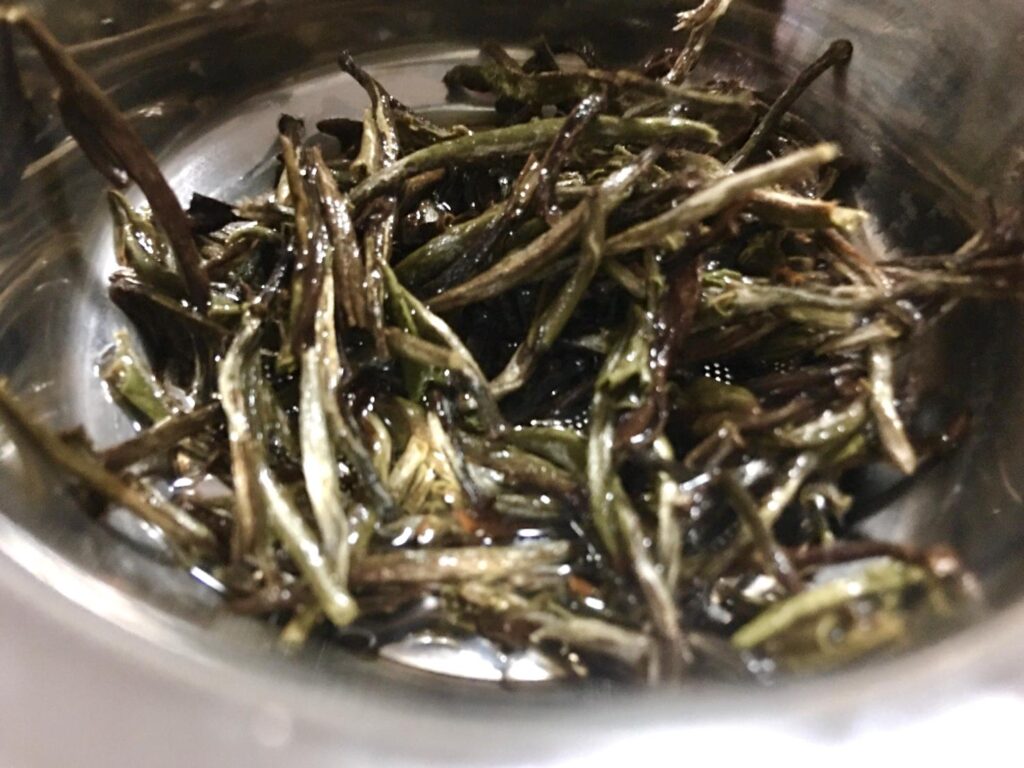C. sinensis var. Dabai; Ningshi Shigulan Agricultural Co., Pingqiao Village, Chengbei Community, Shuangcheng Town, Zherong County, Ningde City, Fujian Province; Autumn, 2018; buds only, white tea process; #TodaysTea, #今天的茶, #JīnTiāndeChá#Tea, #茶, #Chá.
Dry leaf appearance of Zherong Baihao Yinzhen is longer, thinner, and slightly darker than Fuding Baihao. It is also more slender and includes the occasional dark leaf tip. Its aroma aroma is fundamentally different, pleasant, fragrant, with hints of peach, pear, lychee, and melon. Wet leaves become more noticably green and maintain colour variation from light to dark. The wet leaves have a noticeably acrid scent, with a slight undertone of sweet stone fruit.
Liquor is pale pear in colour and has a slight, pleasant, buttery scent. The mouthfeel is smooth and creamy with a peppery bite, followed by a drying astringent finish in the throat. The taste is mild with a very faint hint of lychee, nashi pear, and sweet stone fruit.
4g of tea was steeped in in 50ml of water for 10sec.@80deg. C then a further 100ml of water was added for 60sec.@80deg. C.
This is as lovely, aromatic and fruity tea which is a pleasure to drink. Is it true Baihao Yinzhen tea? Many adamantly insist, from appearance, it is not – “buds are too thin, poor quality!” That’s a controversy still to solve.
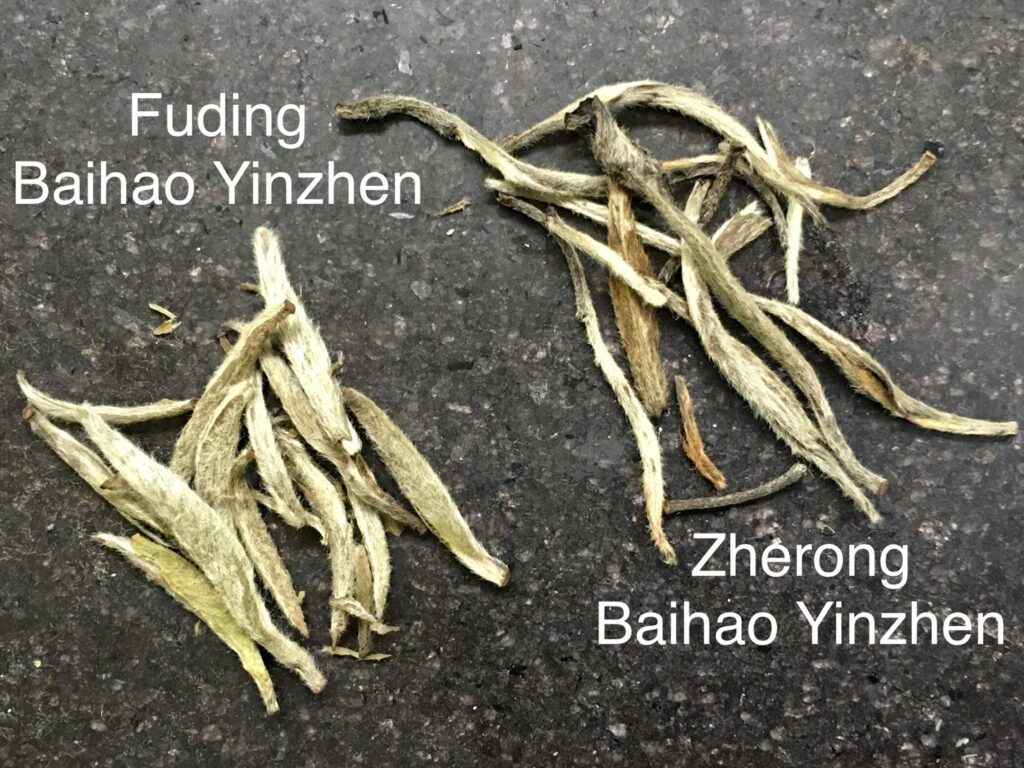
Zherong Country is the direct neighbour on the eastern border to Fuding City: considered the “Home” of “North Road” Silver Needle Tea; and two counties further west is Zhenghe County in Nanping Prefecture: the centre for “South Road” Silver Needle Tea. Curiously, all three counties seem to occupy a similar latitude, so the designation of North or South appears to be somewhat hair-splitting.
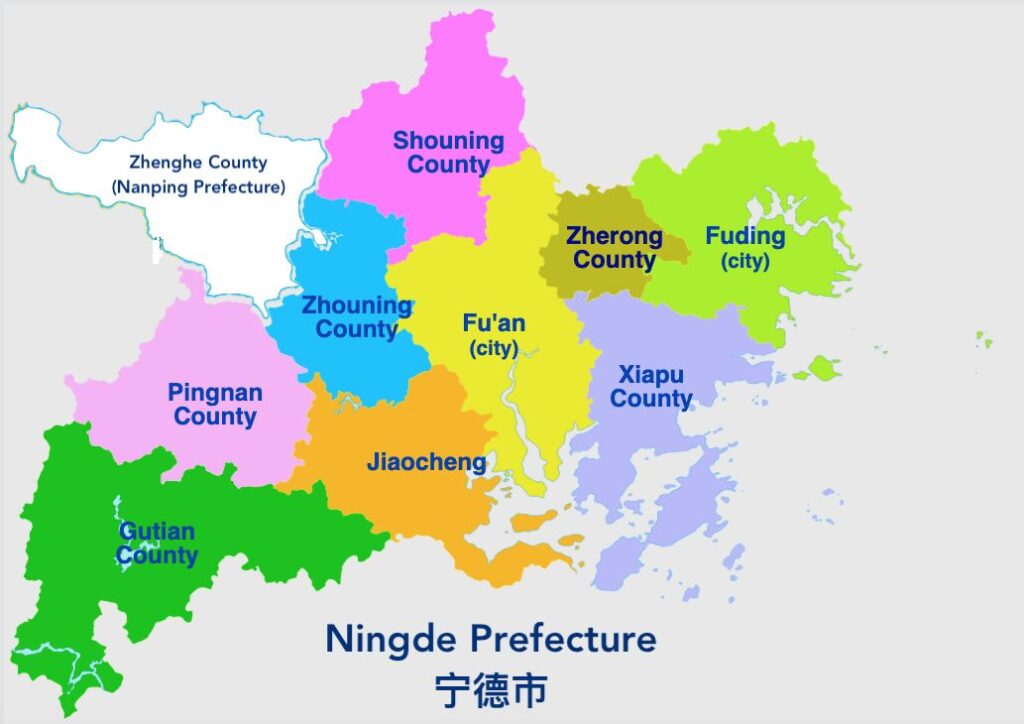
What is clear, is that geography and terroir is critically important to the designation, taste, and appearance, of this tea style. It does not smell, or taste like Fuding Baihoa Yinzhen, the character is completely different. But? Is that a bad thing? Is it something else that deserves it’s own space, rather than accusations of being an imposter? I do like the drinking experience that this tea brings.
